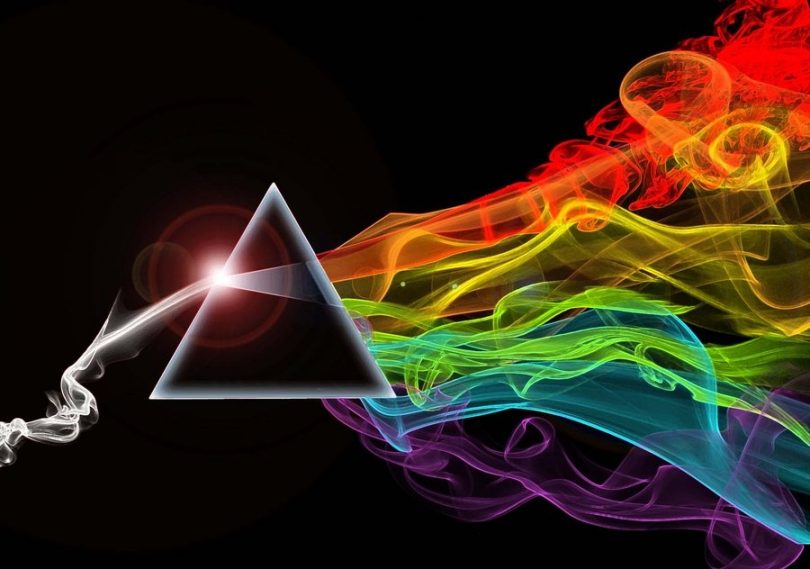Light is a requirement for vegetative life. Like cannabis, when humankind is deficient in getting sunlight, we get S.A.D. (seasonal affective disorder), and need to sit under artificial lights. Animals in caves are often blind, since the lightless environment means their sight is pretty much useless. My what good ears you have. All the better to hear you with.
Color is illusionary. The color we see corresponds to wavelengths of light that the substance doesn’t absorb. Rather, it reflects these wavelengths back, so, green plants don’t absorb green light, which is why we see green. Discussions of plants and light often regard three main regions of the electromagnetic spectrum: ultraviolet (UV, 10-400 nanometers), visible (400-700 nanometers), and infrared (IR, 700 nanometers to 1 millimeter). Within the visible region are further subclassifications into the colors of the rainbow: violet (400–450 nm), blue (450–520 nm), green (520–560 nm), yellow (560–600 nm), orange (600–625 nm), and red (625–700 nm), or ROYGBIV, as you may recall learning.
Indigo isn’t assigned a wavelength. In keeping with traditions like 7 days in a week, 7 musical notes, and 7 known objects peppered throughout the Milky Way, Sir Isaac Newton assigned 7 colors. Our eyes can’t really distinguish the nuances between team BIV, and so, you pretty much learned that acronym for nothing. Or maybe the ‘I’ made it easier to remember.
Lighting is obviously paramount to growing Cannabis sativa. Whether in- or outdoors, the plants must have light. Their photobiology depends on it. A 2019 review paper summarized recent developments in plant photobiology and lighting platforms for different crops, including an outlook towards how these technologies might translate to cannabis. [1] Photobiology refers to photosynthesis, where plants convert sunlight into chemical energy (food) from carbon dioxide, water, and minerals. Lucky for us, this process releases oxygen as a byproduct, highlighting the symbiosis between us and them.
Photobiology also includes photomorphogenesis, which regards a plant’s structural and morphological progression through interactions with light. Characteristics like a plant’s height, leaf size, and flowering are all dictated by five photoreceptors (UVR8, phytochromes Pr and Pfr (for red and far-red, respectively), cryptochrome, and phototropin/zeitlupe). [1]
High intensity lights help maximize plant growth between germination and flowering stages, a period called vegetative growth. The amount of time plants receive light (their photoperiod) controls budding. High intensity, however, can mean large, energy-intensive processes that can tax a cultivation’s electric bill. Therefore, ways to mitigate cost while not sacrificing plant health and vivaciousness collate into any cannabis farmer’s holy grail.
Tune in next week to read about what different colors contribute to photobiology, an electromagnetic spectral breakdown.
Reference
- [1] Bilodeau, S. et al. “An Update on Plant Photobiology and Implications for Cannabis Production.” Frontiers in Plant Science, vol. 10, 2019, no. 296. [journal impact factor = 4.298; cited by 2 (ResearchGate)]
Image Credit: Wake Up World








